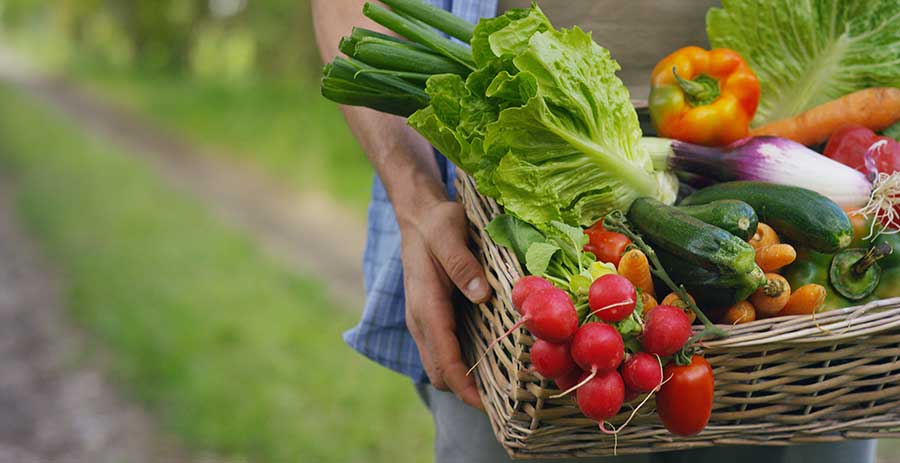What does "organic products" mean?
By now we are all used to seeing products indicated as organic on the shelves. I had an idea of what it meant for a while; however, it was rather vague and I couldn’t say how close this was to reality or, on the other hand, how much it was due to rather misleading suggestions from the communication surrounding us.
Let’s try and explain a bit better!
Agricultural organic products are products obtained using organic agricultural methods, i.e., an agriculture which pays particular attention to respecting the environment, the balance of nature and biodiversity, and which aims at offering the consumer wholesome products obtained in respect of nature’s cycle.
Organic products have been regulated by Reg. (EEC) n. 2092/91 – the first community legislative act concerning this matter; then, on 1st January 2009, the current laws went into force, i.e. Reg (CE) n. 834/2007 – and implementation regulation Reg (CE) n. 889/2008.
The regulation of 2007 states that organic production must pursue the following general objectives:
- to establish a sustainable management system for agriculture which: i) respects natural systems and cycles and improves the health of the soil, waters, plants and animals and the balance among them; ii) contributes to a high level of biological diversity; iii) ensures a responsible use of energy and natural resources such as water, the earth, organic materials and the air; iv) respects strict criteria regarding the wellbeing of animals and satisfies, in particular, the specific behavioural needs of animals according to the species;
- to aim at obtaining high quality products;
- to aim at producing a wide variety of foods and other agricultural products that satisfy the demand of the consumers for products obtained with procedures which do not damage the environment, human health, the health of vegetables or the health and wellbeing of animals.
Also, according to the regulation of 2007, organic production is based on certain general principles and on other specific principles applicable to agriculture. Amongst the first we find, for example:
- the appropriate design and management of organic processes based on ecologic systems that use natural resources within the systems themselves with methods that exclude the use of GMO and products deriving or obtained from GMO with the exception of veterinary medicines;
- limitation of the use of external production factors;
- rigorous limitation to exceptional cases the use of production factors obtained by chemical synthesis.
Instead, among the specific principles applicable to agriculture we find, for example:
- reduction to the minimum of the use of non-renewable resources and of production factors with external origin;
- the recycling of waste products and by-products of vegetable and animal origin as production factors for crops and animal rearing;
- the health of plants must be protected through prophylactic measures, such as the choice of appropriate species and varieties resistant to parasites and vegetable diseases, appropriate crop rotations, mechanical and physical methods and the protection of the natural enemies of parasites.
There are also specific principles which apply to the transformation of organic foods. Among these, we find the limitation of the use of additives and non-organic ingredients with mainly sensorial and technological functions and the ban on using transformation substances and methods which may mislead people about the true nature of the product.
Then, there are regulations concerning vegetable production inspired by principles. Among these we find, for example, the obligation to use techniques for processing the ground and crop practices adapted to safeguard or increase the content of organic material in the earth, to increasing the stability of the earth and its biodiversity, and preventing the compacting and erosion of the soil; or that all vegetable production techniques should avoid or restrict environmental pollution to the minimum.
One regulation which deserves to be looked at more closely is the one relating to plant protection products. The regulation states that, in the event of establishment of a serious risk for a crop, the use of plant protection products is allowed, however only if such products have been authorised to be used in organic production. And, in order for them to be authorised, the following are necessary:
- such products must be necessary for an on-going and essential production for the envisaged usage;
- all the products and substances must be of vegetable, animal, microbial or mineral origin unless products or substances deriving from such sources are not available in sufficient quantities or qualities, or alternatives are not available;
- these are products which are essential for fighting a harmful organism or a particular disease and no biological, physical alternatives are available or relating to the selection of vegetables or growing practices or other efficacious management practices;
- if they are not of vegetable, animal, microbial or mineral origin and they are not identical to their natural form, the products can be authorised only if the conditions of their usage exclude any direct contact with the edible parts of the crop.
Some examples of pesticides of natural origin are the family of “pyrethrin" molecules, the bacterium bacillus thuringiensis, sulphate and copper hydroxide and sulphur. With regard to the “natural and health" topic, however, we must be careful not to fall into the ‘natural is always good’ trap. Some of these non-chemical remedies, in fact, must however be used with attention and moderation and may have negative consequences; therefore there must be standards and reliability on the part of organic producers too. A substance like rotenone, for example, has been abolished recently due to its toxicity; and copper salts, used as fungicides, accumulate in the earth and are not easily eliminated.
Transformed organic products: the label
As far as transformed foods are concerned, it is possible to use terms which suggest to the buyer that they are organic products – for example the term “bio" – only if they satisfy certain conditions, including the one which states that at least 95% in weight of the ingredients of agricultural origin must be organic. The label must also contain the following information:
- the code number of the supervisory authority or organisation to which the operator who has carried out the most recent production or preparation is subject;
- the organic production community logo (the leaf!);
- an indication of the place where the raw agricultural materials of which the product is composed were grown.
Organic products: reviews of regulations
On 20 November 2017, the member States met in the Special Committee for Agriculture (SCA), and approved the agreement on the review of regulations regarding organic agriculture and the labelling of organic products.
The new regulations of the EU establish new provisions with the aim of encouraging the sustainable development of organic agriculture in the European Union, guaranteeing fair competition for farmers and operators, preventing fraud and improving the confidence of consumers in organic products. The new regulations will be applied from 1st January 2021.
Organic agriculture and biodiversity
Many studies confirm that organic crops tend to preserve biodiversity more than intensive agriculture. However, it is also true that intensive agriculture requires on average a smaller area of ground to produce the same amount of food than organic agriculture, and this makes it possible to leave more land uncultivated and to preserve its biodiversity.
The agricultural trend towards organic products therefore generally has a better impact on the environment per unit of surface area, but due to lower yields the same does not always apply per unit of product.
Can organic products completely substitute traditional ones?
From the point of view of safeguarding small farms, thanks to the lower cost of inputs and to the higher, more stable prices of organic products, organic agriculture may be an attractive choice for producers.
According to some tests and the relevant statistics which have emerged, yields per hectare of organic agriculture tend to be lower than those of conventional agriculture, even if the results depend highly on the type of crop and environmental conditions. So, much has been said about the possibility that organic agriculture should become the main farming method; perhaps, considering the estimate which says that the demand for food by the world’s population, in the next thirty years, will be double the current one, in order to manage to satisfy it without destroying other forests, savannahs and prairies, we will have to distinguish between products with the highest demand for feeding a large number of people, such as wheat, and products that do not have a strong impact on the world’s food economy.
Sources:
- Dario Bressanini, Le Scienze Blog
http://www.lescienze.it/ - Lifegate
https://www.lifegate.it/persone - Commissione Europea – Agricoltura e sviluppo rurale
https://ec.europa.eu/agriculture/organic/organic-farming/what-is-organic-farming/producing-organic_it - Sinab – Sistema d’informazione Nazionale sull’Agricoltura Biologica
http://www.sinab.it/
http://www.sinab.it/bionovita/agricoltura-biologica-approvato-laccordo-sul-nuovo-regolamento-ue
http://www.suoloesalute.it/wp-content/uploads/2014/01/Guida_etichettatura_Suolo_e_Salute_seconda_edizione.pdf




